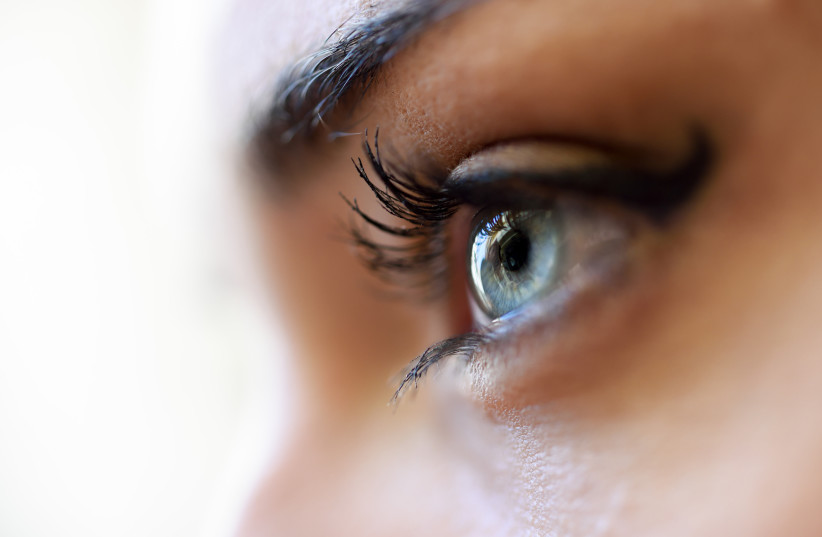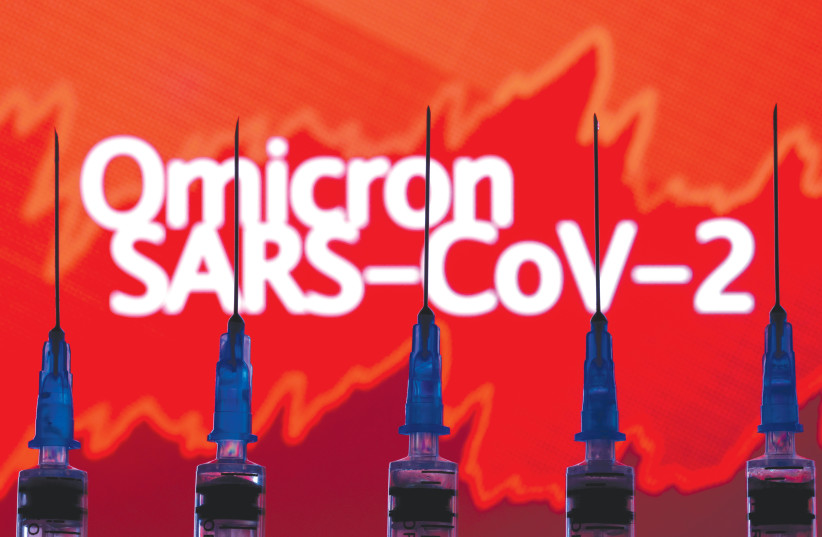While the idea of detecting COVID-19 and other viruses through an eye examination may sound unrealistic to some, to others this is just proof of how innovative the world of ophthalmology can be and how much it has to offer.
Researcher and scientist Prof. Alon Harris, a leading expert in the field of ophthalmology (the diagnosis and treatment of eye disorders) who is of the latter category, is at Medicine 2042 in Tel Aviv to display the technology and capabilities of ophthalmology to the rest of the medical world.
“This conference is a really great opportunity to learn about where medicine is going to be in a few years, and where it’s heading,” he said, sitting down to speak with The Jerusalem Post at the conference on Wednesday.
“I myself am involved with the innovations related to ophthalmology, and I’ll be chairing a session on it here on Thursday,” he said. “We’ll have some state-of-the-art, almost science fiction-like technology. In the future, we will see eye surgery performed by robots, and we’ll be presenting that here.
“For example, my presentation will deal with detecting viruses such as COVID-19 in the eyes. It’s a quick test that takes 40 seconds. We have actually managed to do this in Israel through a company called AdOM, and the test uses a machine known as the Tear Film Imager.”
The way in which the device was discovered to be useful in detecting COVID-19 was completely unexpected, Harris tells the Post, explaining the its background.

“The technology was originally designed for detecting dry eye diseases, and clinical trials started in Japan in 2019, just before COVID-19 started spreading,” he said. “And then, when the data came in for the analysis of those trial images we realized that we could see these lipid droplets in the eye which we later learned were due to Covid.”
The Tear Film Imager is able to detect Covid via the eyes of patients due to its nanometer resolution, something which no other device in ophthalmology has, as they all have resolutions ranging from two-three microns, Harris explained.
Individualizing medicine
ANOTHER ITEM that Harris will be directing his attention to at the Medicine 2042 conference is the development of individualized medicine.
“In the future, by using big data and artificial intelligence, we will actually be able to better tailor medicines and have individualized medicine by combining AI machine learning with genetic studies and genetic profiling,” he told the Post. By doing this, he explains, the specific risk factors of every patient will be analyzed, allowing for medicine and treatment to be adjusted as per the need of the individual.
“The other advantage of this is that not only are you able to tailor the medicine better, you’re also able to detect the disease earlier.”
Expanding on the concept, Harris turns to an area of his own expertise in which individualized medicine will be crucial: diagnosing and treating glaucoma – a group of eye diseases that can cause vision loss and blindness by damaging the optic nerve.
“One of the causes commonly attributed to glaucoma is a high level of pressure in the eyes, but it also has other risk factors. For example, needing to wear glasses for shortsightedness, low blood pressure, or factors relating to your cornea health.
“And so, by using these large databases, we will be able to predict, by looking at the imaging of the optic nerve, how your glaucoma might develop or progress in the future.
In doing so, a medical professional will then be able to decide the intensity of the treatment that is required, how urgent it is, or even if anything needs to be done at all at that point. All of this will be adjustable and customizable as per the patient’s need, leading to a much higher rate of success in treating eye disease effectively.

The acceleration of remote medicine during COVID-19
ALONGSIDE CUSTOMIZED medical treatment, another change Harris sees in the medical world is the progress being made in remote medicine.
“Worldwide, we have noticed a reduction in the number of patients visiting clinics,” he said. “This is because people don’t want to contract coronavirus, or because they’ve gotten used to not actually physically visiting the clinic. And you’re going to see more and more technologies that can actually detect diseases from a distance.”
One of the companies paving the way in telemedicine is the Israeli medical company SlitLED.
“Let’s say you’re in a remote location somewhere, maybe in the Negev Desert,” says Harris describing the technology. “You can upload an image of your eye, it can be uploaded into the cloud and then be analyzed by experts anywhere in the world, without you needing to actually visit that clinic.
“You don’t actually need the doctor or the ophthalmologist to take the images themselves. The doctor can be in a remote place and can guide you in taking the pictures and sending them over.”
The speed at which telemedicine and the remote health industry are advancing is partially due to COVID-19, Harris tells the Post.
“I think that we were heading that way [before], but COVID-19 accelerated the process. It was like a mirror was put in front of our faces to say ‘listen, the population is growing.’ In Israel, and in other places around the world, if you want to get an MRI or if you want to get a CT, you have these huge queues and wait times.”
This can be changed, says Harris, with remote technology that actually reaches out to the patient, instead of requiring the patient to come to it.
“Bottom line: I think the acceleration would have happened regardless, but I think there are some good lessons to be learned from COVID,” Harris said, listing some of them as “remote diagnostics, telemedicine and earlier diagnostics. This is a very exciting time for us.”
